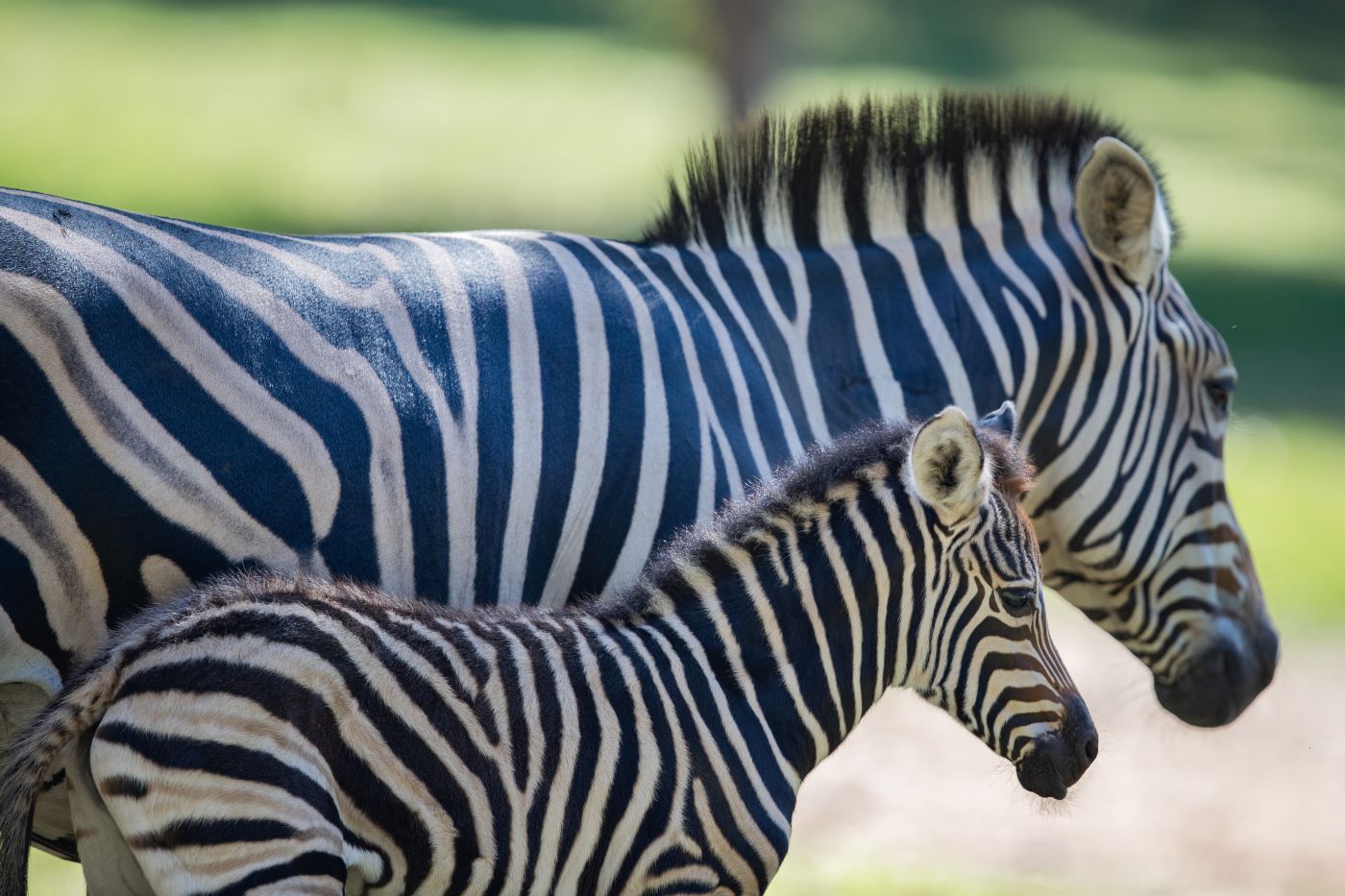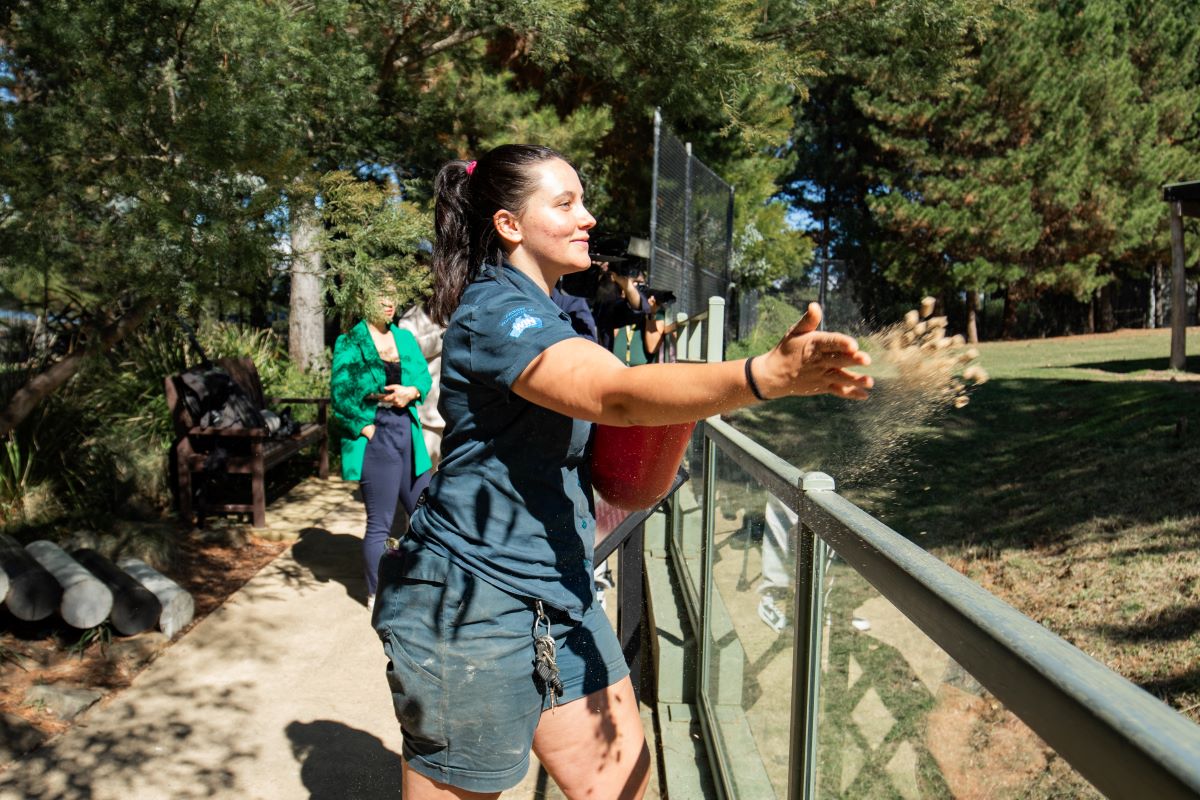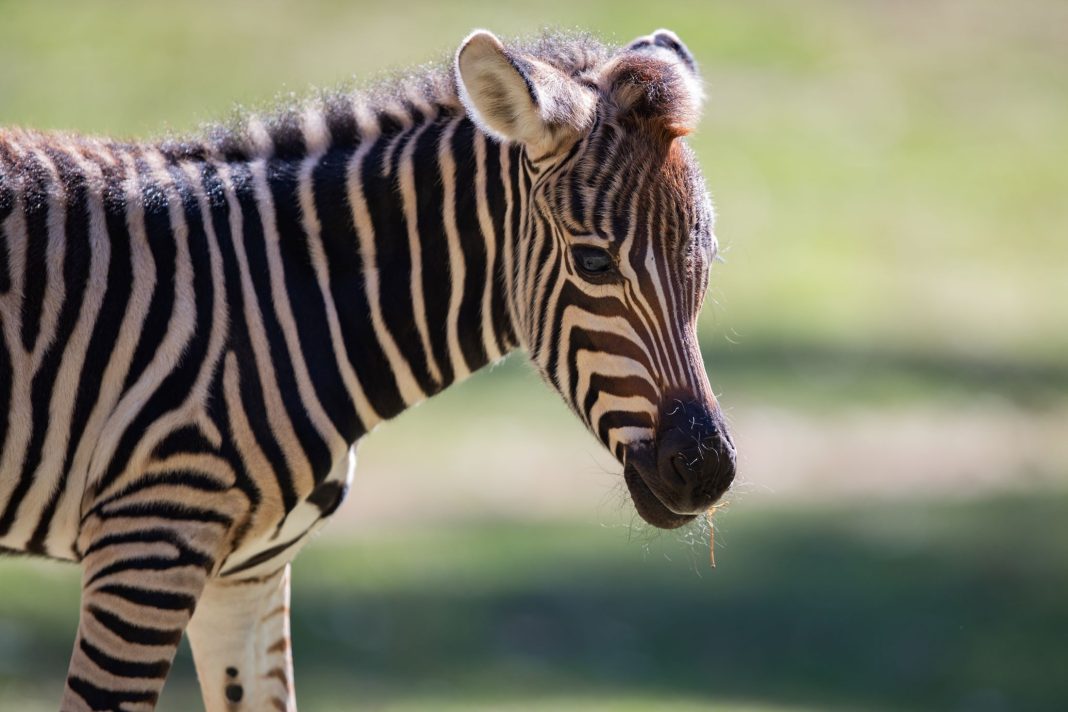On long and increasingly less wobbly legs, the National Zoo & Aquarium’s newest resident, a beautiful zebra foal, could be seen frolicking in the morning sun earlier today.
Not long out of the womb, mum Kiva gave birth overnight on Tuesday, 16 April, with her brand new baby already up and feeding when zookeepers came in the next morning.
“This is my first foal that I’ve found, so I was really excited about it, we always love to have more additions at the zoo and babies, it is really exciting,” says zookeeper Olivia Ware.
As a prey breed, mothers are particularly protective of their young which means keepers will be keeping their distance for a little while as the group adjusts to their new addition.
It will take a little bit longer until we know the sex of the stripey new baby. After that, keepers can start brainstorming what it could be named.
“We like to see the personality of the foal and get a name from that. In the past, we have tried to follow with the first letter of mum’s name but we have too many K names and too many J names for our other mare, we might try and do something different this time,” says Ms Ware.

The birth marks the 27th for zebras at the National Zoo, following a gestation period just shy of a year – 361 days, to be exact. Ms. Ware says the efforts have provided an incredible boost to conservation.
“We’ve been part of the breeding program for at least 10 years, potentially longer. Having those 27 foals has been fantastic for the breeding program in Australia. Those foals have been able to go off to other zoos around the country and be part of their own breeding program.”
Currently doing alright in the wild, the Plains Zebra is the most common of the zebra species and also the most geographically spread out, they can be found through Eastern and South Eastern Africa.
“Zoos and captive facilities now are working towards becoming insurance populations for animals, even if they are not endangered we don’t know what will come in the future,” says Ms Ware.
Plains Zebras are facing habitat loss and overhunting which can drastically impact their endangered status.
“With urbanisation and agriculture, these guys are a species that needs a lot of space, they need food to eat as well. They’re a migratory species also, so when fences are put up and roads are built, that can impact the way they move across their natural habitats,” says veterinarian Joanna Johnson.
The striped coat of a zebra is like a fingerprint, each slightly different and unique to each creature – fun fact their skin is also striped!
“In the wild, they live in plained areas with long grasses and you wouldn’t think black and white is great camouflage but it does help them blend in really well. They live in herds of hundreds, if you all look the same, it is hard to distinguish one individual that you can pick off from the rest of the group,” explains Ms Ware.
So far, the new baby’s distinguishing qualities include its long legs and a tuft of brown in its mane, the keepers are keen to get to know its personality.
“[It’s] definitely a bit cheeky, normally foals try and stay really close to mum and mum is protective, but this foal is more than happy to go and annoy its big brothers and dad,” smiles Ms Ware.
Yet to be assessed by the facility’s veterinarians, animals involved in breeding programs are encouraged to go through the process as closely as they would in the wild.
“We won’t be touching baby until the first instance where it might need to do a general anesthetic,” says Ms Johnson.
Without being able to get too close, the team can still get a relatively clear idea of how Mum and Bub are both dealing.
“One of the first things we want to see is that they are up and about moving around, they’re active. You want to see them drinking from mum quite early on and so far we’re seeing all those things,” says Ms Johnson. “Mums recover quickly. In the wild, they have to be able to do that, they’ve got natural predators out there so they need to be ready to work with the herd.”
The last few zabras born at the zoo have been males, could this new addition break the masculine streak? Thrilled to have found her first zebra foal, Ms Ware says each animal is unique and she can’t wait to get to know the new baby.

“When you work with an animal you get to see all their little quirks and it’s a bit different from watching them from afar. My favourite thing about Kiva is that she’s a bit of an airhead but she is so food motivated, if you have food she will do anything for it, she’s very funny,” smiles Ms Ware.
Entering the world at the perfect time- school holidays – the community can see the new baby becoming more confident each day.
“So many people can come into the zoo and experience this little fresh baby… The foal will drink from mum, have a run and a sleep. If you sit here and watch for a while, you will get to see all of those behaviours,” says Ms Ware.
Visit the new zebra baby and the other animals at the National Zoo & Aquarium seven days a week; nationalzoo.com.au
Canberra Daily is keen to hear from you about a story idea in the Canberra and surrounding region. Click here to submit a news tip.



